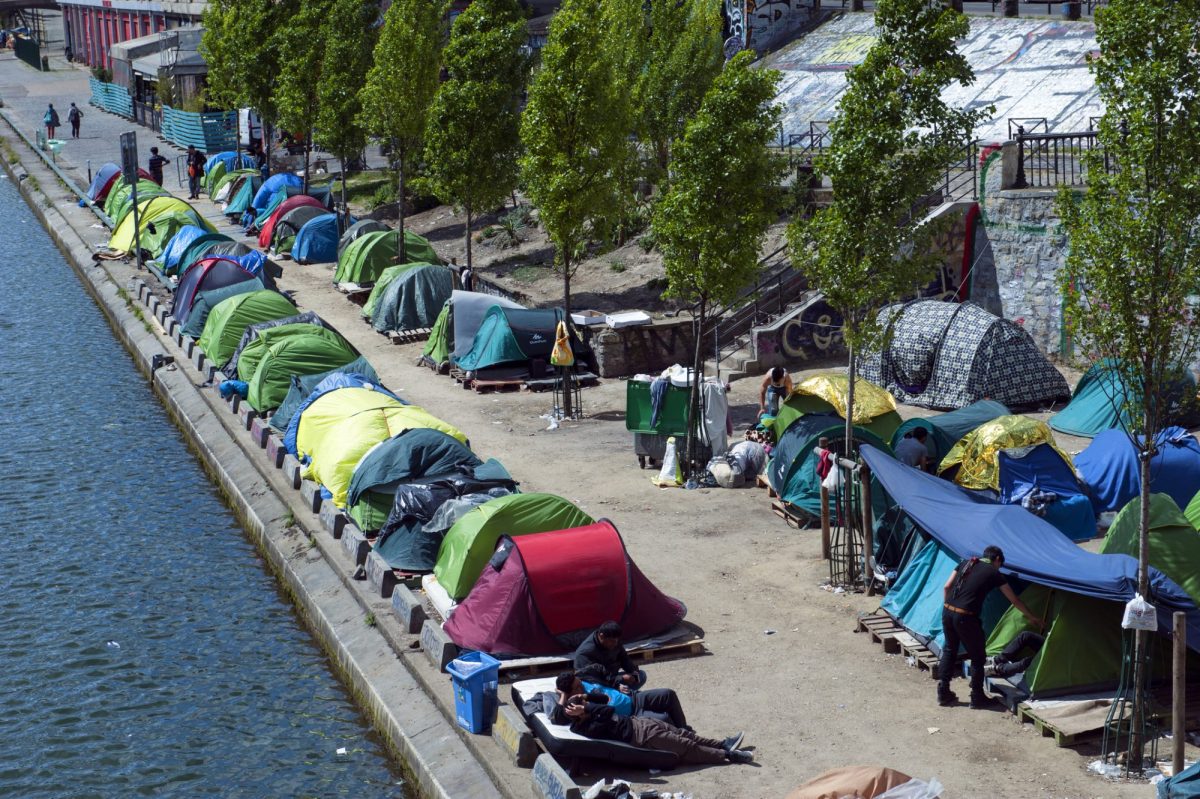The earliest recorded water conflict occurred 4,500 years ago on the banks of the Euphrates River. One local king had drained an irrigation canal for unknown reasons and put a neighboring kingdom at risk, leading to war. Since then, human beings have largely cooperated over water but many wars have also been precipitated because of the resource. Usually, shortages of water are only a part of the cause of water conflict. Most often, water stresses and their consequences are handled through shifts in economic trade and international cooperation. But there comes a point when water scarcity cannot be overcome by the available means of allocation. This water security issue becomes paramount when considering how climate change will disrupt food and water distribution to the point that countries will have to conserve more than share their fresh water.
As global population pressures continue to increase, and precipitation patterns change spatially and temporally in unpredictable ways from climate change, logistical systems and resource production is threatened with instability. The human need for water is critical on a number of levels: from basic consumption and growing of food, to power generation and industrial or even recreational uses. These intersections of needs are spread across a wide variety of stakeholders.
If institutions or power brokers are unable to govern how the water is acceptably used and allocated, then conflict can occur. When it does, it causes fundamental and striking breaks in societies and threatens stability across entire regions or even globally.
If we are to look at one small case study of the destructive potential of ineffective water policy and ineffective water governance, look no further than the Syrian Civil War. Like so many other developing countries across the globe, Syria was at a crossroads. In order to reach higher levels of development, the country needed to raise its GDP faster than its population growth rate. In order to do this, it began to look outside of its domestic economy and traditional economic allies. Syria turned to multinational corporations capable of increasing agricultural production on a mass scale.
At the time, agriculture made up roughly 20 percent of Syria’s economy and employed 25 percent of the working population. When the multinational corporations took over elements of the agricultural sector to further increase food production and GDP, they were directly tied into the Syrian banking system as part of the trade deal. Then the worst drought in the last 900 years hit the region in 2006 (and still carries on today). The strained water supply forced the Syrian government to curb allocations. The government of Syria had to choose between the large agribusiness firms that were tied to the national banking system or sustaining local, traditional farmers throughout the country. To make the situation more dire, water data and distribution was controlled by four different Syrian water agencies that largely failed to share the data. With a lack of reliable data, controlled and accurate distribution of water was not possible. Looking to keep their economy more stable, the Syrian government chose to prioritize water to the agribusiness crops and in effect displaced a significant portion of their population.

As a result, rural populations flooded the cities looking for work, tensions rose, and in 2011 the regime violently suppressed calls for Bashar Al-Assad (Syria’s president) to step down. Revolution broke out, and then rapidly descended into civil war, which still continues today. From the beginning of the war, control of water systems has been intentional and prominent. Control of pump stations, dams, irrigation canals, and other water infrastructure allows power brokers to control regional irrigation and access to drinking water to extend their power and turn water allocation into a weapon.
On a larger scale, these symptoms of incomplete water data, lacking water authority, and economic and population pressures are widespread across the globe from Asia through Africa, and portions of North America and South America. The tiny case study of Syria showed that just 5 million external refugees shook Europe and tested the region’s ability to adequately provide for them. Multiply the 5 million by 100 and you have a fraction of the 1.3 billion people from nuclear-armed countries that get perennial water from the now drying Tibetan Plateau.
The moral here is simple. Water must be accessible, secure, and clean for as many people as possible. In this, we will have to make sacrifices, cooperate, and provide for neighboring countries, minorities, and peoples, even when our own resources are strained. Without this mindset of ‘one for all and all for one’, we will have to contend with the most utterly ruthless, problem solving, rational apex predator in known existence. One that is adept at destroying the entire species: Us.
About the Author
 David Bonomo is a 2016 graduate of Colorado State University. He currently works at a marketing firm in Fort Collins doing small and medium business development with the plan to transfer these skills to international development. His passion for water and conflict mitigation was sparked while living in the West Bank/Israel in 2008 where water was a great predictor of territorial claims and conflict by either side. Later, he spent a year in China, which allowed him to witness the expansive water issues that some countries face. After he returned to school, water and conflict was his primary focus, including work on the Syrian civil war and the looming international crisis of the Tibetan Water Plateau. He plans to pursue a master’s degree in water resource management with a focus in the Middle East from TH Koln University in 2019.
David Bonomo is a 2016 graduate of Colorado State University. He currently works at a marketing firm in Fort Collins doing small and medium business development with the plan to transfer these skills to international development. His passion for water and conflict mitigation was sparked while living in the West Bank/Israel in 2008 where water was a great predictor of territorial claims and conflict by either side. Later, he spent a year in China, which allowed him to witness the expansive water issues that some countries face. After he returned to school, water and conflict was his primary focus, including work on the Syrian civil war and the looming international crisis of the Tibetan Water Plateau. He plans to pursue a master’s degree in water resource management with a focus in the Middle East from TH Koln University in 2019.
